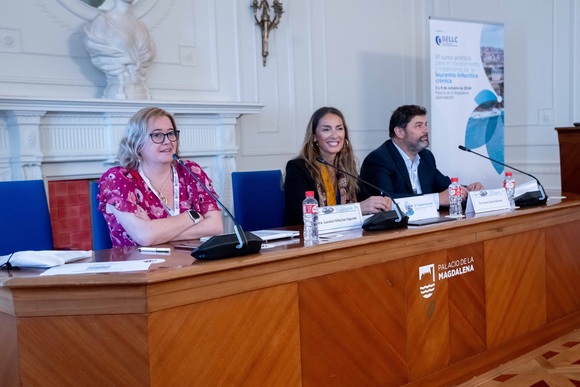Chronic lymphocytic leukemia, one of the most common types of blood cancer in Spain.

The VI practical course on the study and treatment of chronic lymphocytic leukemia (CLL) took place at the Magdalena Palace in Santander, organized by the Spanish Group on Chronic Lymphocytic Leukemia (GELLC) of the Spanish Society of Hematology and Hemotherapy and coordinated by Lucrecia Yañez San Segundo, hematologist at the University Hospital of the Marquis de Valdecilla, and Francesc Bosch Albareda, Head of the Hematology Service at the Vall d’Hebron University Hospital in Barcelona and President of the GELLC.
This course presented Spanish data on the epidemiology of CLL, a blood cancer that is the most common type of leukemia in the West. As explained by Rafael Marcos Graguera, epidemiologist of the Girona Cancer Registry and coordinator of HematoREDECAN (Spanish Network of Hematological Cancer Registries), CLL is a B-lymphocyte malignancy characterized by the accumulation of small mature lymphocytes in the blood, bone marrow and secondary lymphoid tissues, causing various clinical manifestations. This type of leukemia “is more common in men and its incidence increases significantly with age, being higher in Europe, North America and Oceania.” According to the data presented, CLL affects 492 people per 100,000 inhabitants in Spain, being one of the most common types of blood cancer in the country.
This course also discussed blood cancer incidence estimates projected for 2025, when approximately 25,770 new cases are expected in Spain, a significant proportion of which will be CLL. Despite this, experts stressed that survival rates have improved in recent years, with the five-year net survival rate in Europe exceeding 70%.
